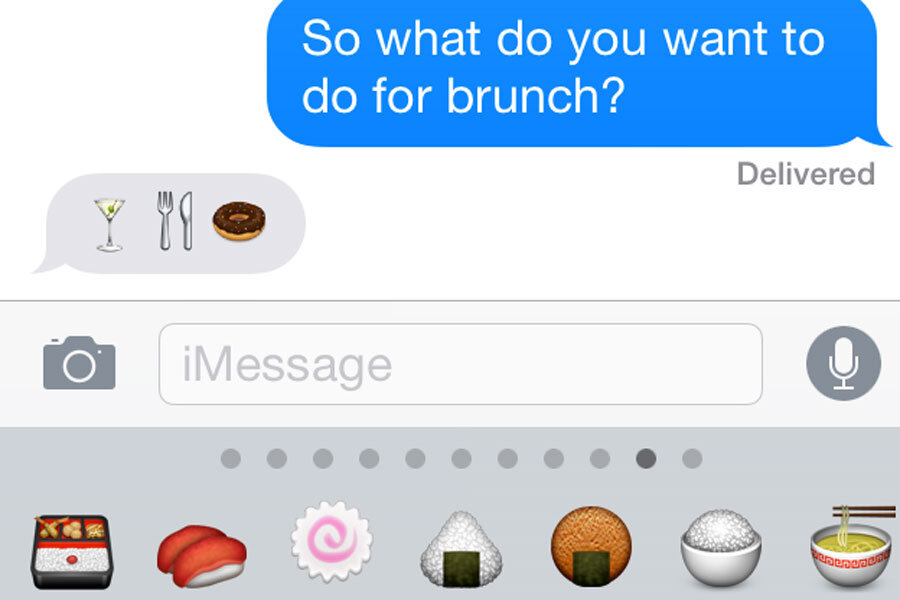30-day emoji challenge: Are we the new Egyptians?
Loading...
Has the overuse of emoji – those little pictograms we use to punctuate text messages – turned our society into the new Egyptians? A New York couple recently put these modern hieroglyphics to the test for 30 days, challenging both the parameters of the symbols and their relationship.
In order to decode this story, it may help to provide a few working definitions: emojis and emoticons are like ancient pictograms or individual images that represent ideas. Stringing those emojis and emoticons together to create a storyline or conversation composed solely of these images could be considered modern hieroglyphics.
This couple, Alex Goldmark and Liza Stark, has been together for 2 years, and decided to take a challenge issued by Mr. Goldmark's employer, the radio show New Tech City, to test visual communications and see if going all-in with emoji-only hieroglyphic communication might strengthen the relationship.
“I am not a visual thinker… but my girlfriend, Liza Stark, is very visual,” says Goldmark on the WNYC radio show. “So we signed up to be the New Tech City guinea pigs to see if this could help our relationship just a little bit.”
Goldmark adds, “We didn’t jump in blind. We downloaded all the apps we thought would help.”
The couple used their favorite Chinese-made application, WeChat, instead of texting because there were more emoji available.
"It was important that we figured out how to define our vocabulary," Goldmark says during the segment.
While this couple was using emoji as a visual communication test, one of the editors here at The Christian Science Monitor, Lane Brown, was forsaking all forms of emoticon, emoji, and texting-speak for a month.
“Too often, I found that my checking in on a friend via text message made me sound like a middle-school cheerleader. ‘Give me a hi! Give me a ho! Tell me what you’re up to! I’d like to know! LOL!’ Capped off with a winking smiley,” Ms. Brown wrote in a recent blog.
She adds, “The practice had also dribbled into my professional communications as well, with emails steadily shrinking in favor of shorter notes with exclamations serving as proof that I was not delivering an order or criticism, but instead making a really, really, really friendly suggestion that I hope you might accept.”
While Brown was on a visual-communications cleanse, there was a squelching effect on my own communications with her as I tried to follow her example out of courtesy. It was like choosing a salad when dining with your vegan boss.
“I did see a difference,” Brown wrote, “and I came to appreciate writing even the shortest notes more, taking a few extra seconds to craft each, which also helped me to remember what I was actually saying to people.”
In both experiments, the end results seem to be that visual messaging will continue to play a powerful role in interpersonal and professional communications.






